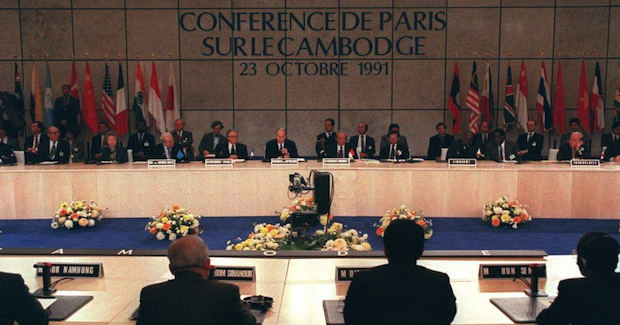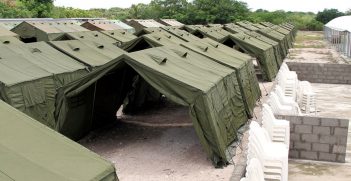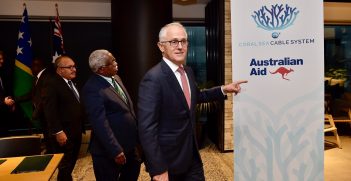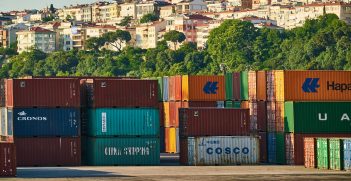Cambodia's Peace After 25 Years

This week it is 25 years since the Paris Peace Accords marked the official beginning of the end of the violent civil war in Cambodia. The anniversary offers an opportunity to reflect on the hard-won lessons of how to rebuild after decades of conflict, the challenge of postwar justice, and how Cambodian peacebuilding efforts might be useful to other contemporary conflicts.
A turning point
It was not only Cambodia’s internal factions that fought over power, interests and control of Cambodia. Vietnam, Thailand, China, the Soviet Union and the US all engaged at various levels, and all needed to be involved in negotiating a comprehensive settlement. The years of negotiations that culminated in the Paris agreements offer lessons that can inform analysis of other complex conflicts such as Syria.
The resulting Paris Peace Accords (PPA) represented a turning point for Cambodia’s transition. They enabled the 1993 elections to occur, which in turn led to the end of the civil and political conflict in 1998 and to Cambodia’s post-war shift in the direction of peace.
The Force Commander of the United Nations Transitional Authority in Cambodia (UNTAC), Lieutenant General John Sanderson, reflected on the achievements of the mission in an interview for this article. He remarked that UNTAC was successful overall in supporting the peace plan given the enormity of its mandate, the difficulty of engagement with the Khmer Rouge and the brevity of resources and time.
A major achievement was the registration of 96 per cent of eligible voters for the electoral rolls. This allowed a 90 per cent turnout for the 23-27 May 1993 elections despite threats against the population. The presence of UNTAC across the country calmed fears and facilitated participation. Gareth Evans, then foreign minister and leader of Australia’s diplomatic contribution to the PPA, commented how moved he was on seeing the satellite images of men, women and children lining up at polling stations, knowing the risks but thrilled at the prospect of peace.
Safeguarding peace
The 1993 election outcome was contested by Cambodian People’s Party (CPP) leader Hun Sen (who did not receive a majority vote), therefore an uneasy power-sharing arrangement with the royalist party FUNCINPEC was introduced through a constitutional amendment that allowed for co-prime ministerial posts. The compromise was introduced as Cambodians feared a return to violence after so much fighting. The international community and the UN were also wary of triggering a civil war or jeopardising the peace process by their actions.
Whilst this was a unique arrangement, the situation where political leaders’ self-interests dominate over the interests of people and undermine lasting peace is not: South Sudan is another example.
Sanderson still harbours deep feelings of regret about how the UN handled the formation of the constitution.
“We should have controlled the process of developing a constitution in a much more developed way. Since by creating that sort of bipolar civil administration through the constitution you more or less guaranteed the CPP would take over in a coup d’etat and the constitutional monarchy that came out of it would not be enough. My conviction was, we’re putting a lot into this, we’re committed to the Cambodian people, we’re obliged to deliver to them an enduring framework in law for their nation, which we didn’t do…”
The continuing rule of Hun Sen makes him one of the longest-serving leaders in the world. With only minor changes, Cambodia is still governed by many of the same ministers, members of parliament and political party leaders. This situation has allowed enough stability to keep a relative peace and reflects Cambodian resilience, tolerance, and ability to accept ambiguity.
The politics of justice
Like other difficult and complex negotiations for political settlements, the absence of war or violent struggle (what is called negative peace) can take precedence over peace with justice. In Cambodia, stability was prioritised over justice. It is a situation Colombia now faces as it balances concern for justice with furthering of its monumental peace agreement.
With many former members of the Khmer Rouge (KR) still in power today, there are limits to the efforts of the UN-backed Extraordinary Chambers in the Courts of Cambodia (ECCC) in its prosecution of the top few surviving leaders of the KR regime. The charges include war crimes, crimes against humanity and genocide alleged to have been committed between April 1975 and December 1979, but James Goldston of the Open Society Justice Initiative says the history of these tribunals has been a “series of concessions to Hun Sen”. Moreover, no donor governments have “publicly challenged Phnom Penh’s baseless opposition to further trials beyond those already underway”.
From the Central African Republic to Central America, from Syria to Ukraine, the situation offers lessons about international justice and the option of using regional tribunals alongside the work of the International Criminal Court. With complaints over the slow pace, the costs of the proceedings and allegations of political interference, it has had little visible impact on Cambodia’s continued culture of impunity for the politically connected. For Cambodians, the legacy of the ECCC will not equate to the type of justice and reconciliation processes they desire.
Cambodian peacebuilding
Cambodia has moved from armed to political struggle, from negative peace gradually towards a more positive peace. Since the 1990s, Cambodians have led peacebuilding efforts that helped to refocus on the future, build relationships and adopt alternatives to violence. Cambodia’s anti-landmines campaign, weapons reduction efforts and conflict resolution programs are some examples. As the country looks forward, many have focused on the two-thirds of the population who are youth or “bamboo shoots” as they are often called. Youth for Peace (YFP) and the Alliance for Conflict Transformation are illustrative of local non-governmental organisations focused on supporting young people to help transform the legacy of past conflicts.
The Cambodian Peace Museum is being developed as a space for learning and reflecting on Cambodia’s journey from conflict to peace that highlights the resilience of Cambodia’s people in transforming conflict and overcoming adversity. Its creator Soth Plai Ngarm has said that young Cambodians are “insisting on a higher quality of life than the peace we have been able to build for them” and that “stability is just a small part of their bigger dream”.
Australia as peacemaker?
Cambodia largely remains Australia’s best remembered and most significant contribution to international peacemaking. Reflecting on whether Australia can play a bigger role in supporting peacemaking efforts in the future, as it did in Cambodia, Gareth Evans believes we can and should. He maintains that Australia has sufficient credibility and capacity to work with others on international problems but that our political will has waxed and waned over the years.
Sanderson too sees the value in reflecting on the Cambodian experience.
We had to go in there with an intent that was the basis of your own society. If you want to ask the Australians to go and engage in a place like [Cambodia], are you going to say to them, ‘Look, as long as the outcome is stability, it doesn’t matter what the ongoing situation is’. You don’t say that do you?
A quarter of a decade ago Cambodia was an opportunity for Australia to become engaged in Southeast Asia in a way that would lay a foundation for its future role in Asia. For Sanderson, Australia’s role in Asia needs to transcend current thinking and acting within frameworks that are about the past rather than the future.
Dr Tania Miletic is a research fellow with the School of Social and Political Sciences at the University of Melbourne and part of the Australian International Conflict Resolution Project.
This article is published under a Creative Commons Licence and may be republished with attribution.





